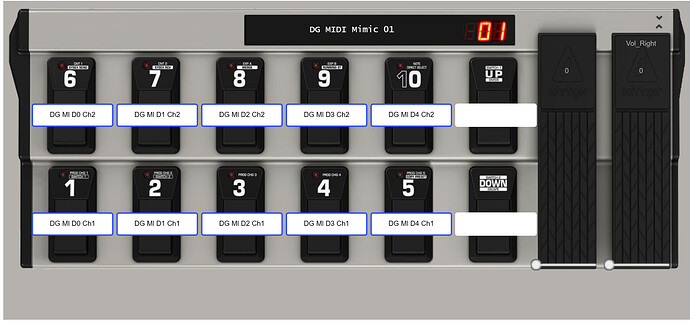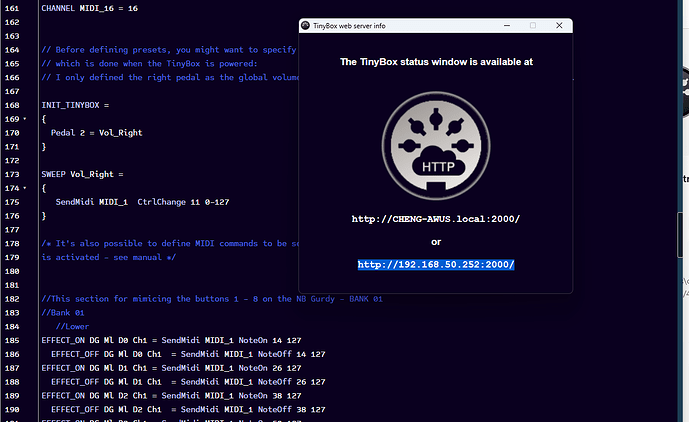There is actually a sublime upgrade/modification that you can make to your FCB1010 - far beyond the UnO or UnO2 - although I should note that TinyBox also makes the UnO (UnO = UnOfficial) firmware. It’s made by TinyBox/Gordius. When I checked back on the TinyBox website today I was also pleasantly surprised to see that they have continued to expand on their UnO2 firmware and modifications, including a pending hardware release that adds wireless functionality to the FCB1010 and has an embedded setup editor and status webserver. No more MIDI-USB interface needed. They also make Uno for Kemper and UnO 505 - a dedicated firmware version for the RC-505 that makes the FCB1010 a “zero programming” RC-505 foot controller.
The “TinyBox” is a very small footprint MIDI-USB interface, a MIDI merge box, a smart MIDI filter and router, and much more. This smart little box you can turn your Behringer FCB1010 into an extremely advanced MIDI controller. It is literally fully 100% programable by typing plain text into the controller editor. The editor has auto-completion help from the smart text editor. You can create the most complex setup in no time, and make libraries of your setups that can be gig-specific rather than having some massive conglomeration on the controller itself, although that is also possible.
No more staring at your feet either: use can use your PC, iPad or other tablet as wireless status display for your FCB1010. A clear overview screen shows the names of all presets in the current FCB1010 bank, the type of switches (preset, effect, trigger), the effect states and so on… Keyboard players can even use the iPad touch screen to control their rig, instead of having a real FCB1010 at their feet. I often use my emulation display on my PC when I don’t feel like dragging out my FCB1010.
The TinyBox software has a setlist manager built in too. You can scroll through the setlist with the FCB1010 up/down switches, while your iPad scrolls through song lyrics, tabs or scores, and the TinyBox sends all corresponding MIDI messages for each song. It has gotten to the point that I use my TinyBox setup in lieu of my KMI SoftStep2, 12Step, Korg PK-5a, various other foot controllers and external switches. TinyBox also has a fantastic user group that is actively monitored and contributed to by the developers as well as users, like you get here in the GP community.
The limit to TinyBox seems to be more up to what the performer/user can think of rather than hardware or software. However, you have to be a tiny bit handy with being able to do some hardware modifications like replacing the EEPROM in the FCB1010 and a wiring job that allows the FCB1010 to be powered by a 7 pin MIDI cable (available from TinyBox) from the TinyBox. This setup has become my primary go-to midi-controller and, best of all, works seamlessly with Gig Performer for everything I’ve tried. I have included several links below for your convenience.
TinyBox
FCB1010 add-on shop
FCB1010 add-ons
Has links to for the original UnO, UnO2, Uno for Kemper, and Uno 505 - and the FAQs, where they cover all aspects of making the mods, upgrades, and full Help Manuals on everything they produce.
![]()
![]()
![]()
![]()



